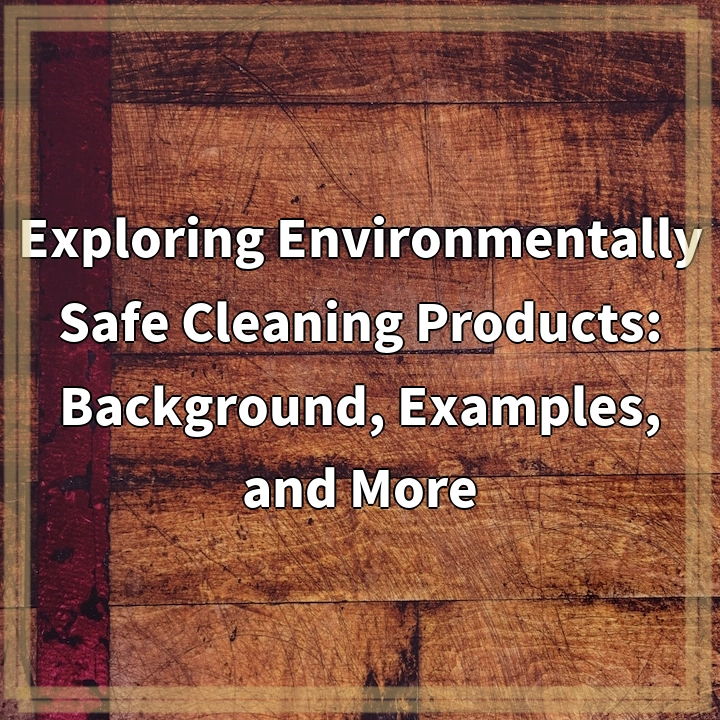
What it is:
Exploring environmentally safe cleaning products is an important aspect of promoting sustainability in our daily lives. With the increasing concerns over the negative impacts of harsh chemical cleaners on our health and the environment, there has been a growing demand for alternatives that are safer and more eco-friendly.
Environmentally safe cleaning products refer to a wide range of cleaning solutions, tools, and practices that are designed to minimize harm to human health and the environment. These products are typically made from natural, non-toxic ingredients that are biodegradable and do not release harmful pollutants into the air or water systems.
By opting for environmentally safe cleaning products, individuals and organizations can contribute to reducing their ecological footprint and supporting a more sustainable future.
Real-World Problems:
Despite the numerous benefits of environmentally safe cleaning products, there are still some challenges and obstacles that need to be addressed:
1. Limited Availability:
The availability of environmentally safe cleaning products is still limited in many regions. Consumers often struggle to find these products in local stores, which makes it difficult for them to adopt sustainable cleaning practices.
2. Higher Costs:
In some cases, environmentally safe cleaning products can be more expensive compared to traditional chemical cleaners. This price difference can discourage individuals and businesses from making the switch to greener alternatives, especially for those on a tight budget.
3. Performance Concerns:
Some people may have reservations about the effectiveness of environmentally safe cleaning products. This perception stems from the belief that harsh chemicals are needed for tough cleaning tasks. Educating consumers about the efficacy of eco-friendly alternatives is crucial for dispelling these concerns.
4. Greenwashing:
Greenwashing refers to the practice of misleading consumers by providing false or exaggerated environmental claims. In the case of cleaning products, some companies may label their products as “green” or “natural” without truly meeting sustainability standards. This poses a challenge for consumers who are trying to make informed choices.
5. Lack of Regulation:
Currently, there is a lack of comprehensive regulation in the cleaning product industry. This means that manufacturers are not always required to disclose all the ingredients used in their products. This lack of transparency makes it challenging for consumers to assess the true environmental impact of the products they purchase.

Solutions for Environmentally Safe Cleaning Products:
1. Increased Availability:
Efforts should be made to increase the availability of environmentally safe cleaning products in local stores. This can be achieved through partnerships between manufacturers, retailers, and environmental organizations, as well as through online platforms that promote sustainable products.
2. Affordability:
Making environmentally safe cleaning products more affordable is crucial for widespread adoption. This can be achieved through incentives such as tax breaks, subsidies, or bulk purchasing programs. Manufacturers can also explore more cost-effective production methods to reduce the price gap between eco-friendly and traditional cleaners.
3. Education and Awareness:
It is important to educate consumers about the effectiveness of environmentally safe cleaning products. This can be done through educational campaigns, workshops, and online resources that showcase real-life examples and success stories. Providing clear information about the benefits, performance, and proper usage of eco-friendly alternatives can help dispel misconceptions.
4. Effective Regulation and Standards:
Implementing stringent regulations and standards for cleaning products can help combat greenwashing and provide clear guidelines for manufacturers. Governments and industry organizations can work together to establish certifications and labeling systems that indicate the environmental and health impacts of different cleaning products. This will enable consumers to make more informed choices.
5. Transparency and Disclosure:
Manufacturers should be required to disclose all ingredients used in their cleaning products. This transparency will enable consumers to evaluate the environmental impact and safety of the products they purchase. Supporting initiatives that promote ingredient transparency and sustainable sourcing can encourage manufacturers to adopt greener practices.















